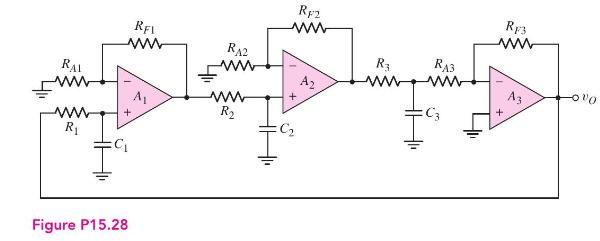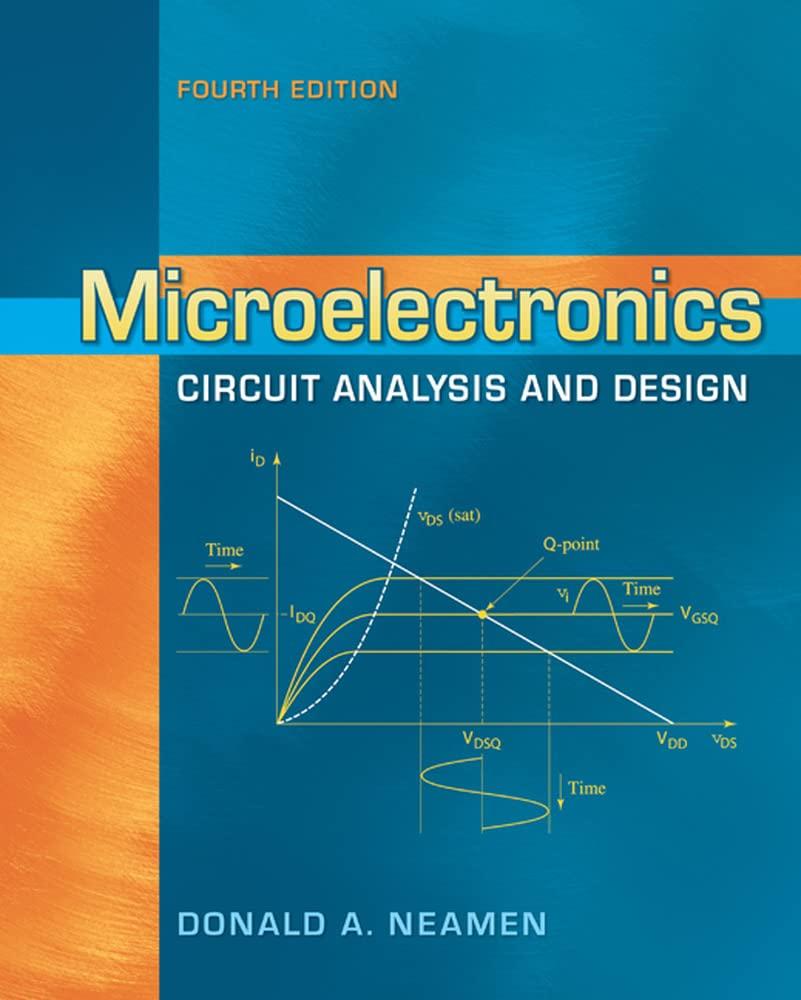In the circuit in Figure P15.28, let (R_{F 1}=R_{F 2}=R_{F 3} equiv R_{F}), (R_{2}=R_{3}=R_{A 1}=R_{A 2}=R_{A 3}
Question:
In the circuit in Figure P15.28, let \(R_{F 1}=R_{F 2}=R_{F 3} \equiv R_{F}\), \(R_{2}=R_{3}=R_{A 1}=R_{A 2}=R_{A 3} \equiv R, C_{1}=C_{2}=C_{3} \equiv C\), and let \(R_{1}\) be a variable resistance \(R_{1}=R_{V}\).
(a) Derive the expression for the frequency of oscillation.
(b) If \(R_{V}=R\), determine the condition for oscillation.
(c) Using the results of part (a), determine the range in the frequency of oscillation for \(R=25 \mathrm{k} \Omega, C=0.001 \mu \mathrm{F}\), and \(15 \leq R_{V} \leq 30 \mathrm{k} \Omega\).

Fantastic news! We've Found the answer you've been seeking!
Step by Step Answer:
Related Book For 

Microelectronics Circuit Analysis And Design
ISBN: 9780071289474
4th Edition
Authors: Donald A. Neamen
Question Posted:





